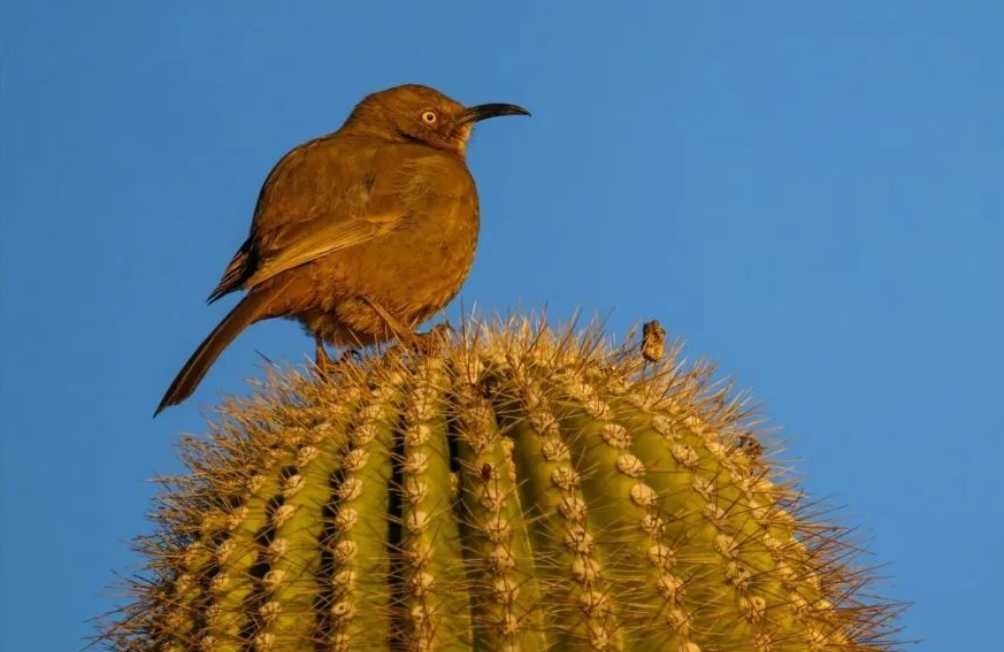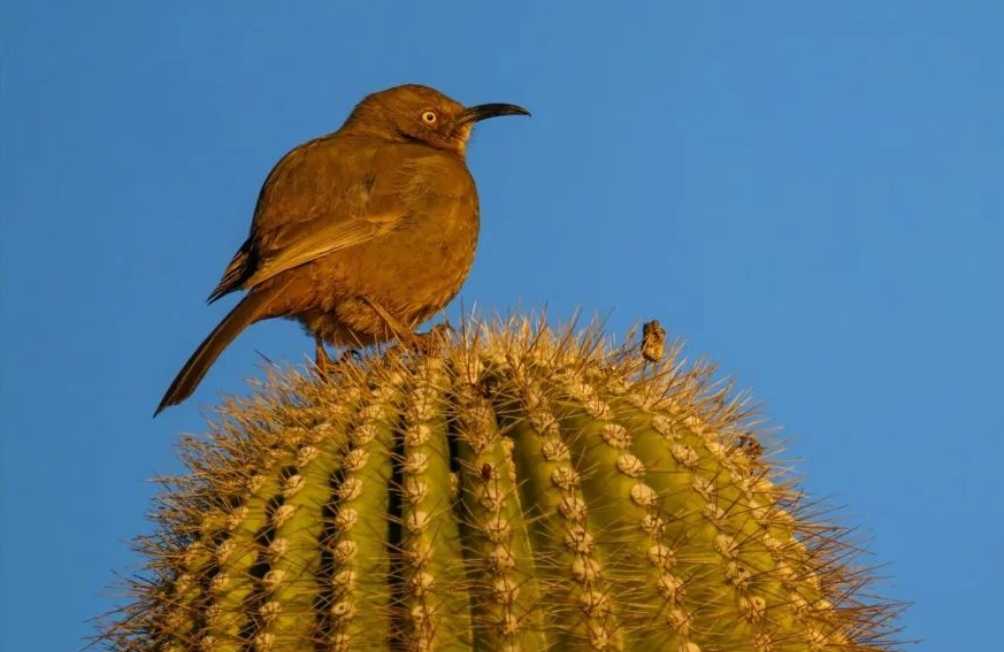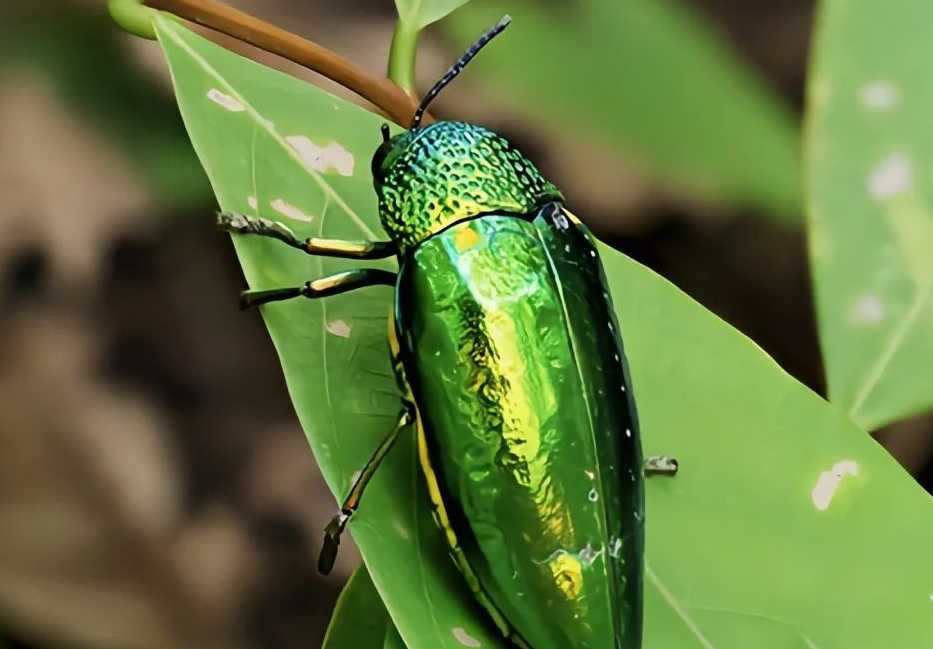The Adaptable Curve - Billed Thrasher: A Sonorous Songster of the Southwest
The Curve - Billed Thrasher (Toxostoma curvirostre) is a distinctive bird species that commands attention with its unique appearance and melodious calls. Native to the southwestern United States and northern Mexico, this avian inhabitant has carved a niche for itself in arid and semi - arid landscapes.

Source: Images from the Internet, if there is any infringement, please contact the removal of
Measuring around 28 - 33 centimeters in length, the Curve - Billed Thrasher stands out with its long, downward - curving bill, which gives the species its name. This specialized bill is perfectly adapted for probing crevices, flipping over leaves, and extracting insects from the ground. Its plumage features a warm, earthy palette, with brownish - gray upperparts and a paler, buff - colored underbelly. The bird's wings and tail display darker, bold streaks, while a prominent white eyering enhances its alert and curious expression. Males and females share similar appearances, making it challenging to distinguish between the sexes at a glance.
These thrashers thrive in a variety of habitats, from desert scrublands and thorn forests to riparian corridors and suburban gardens. Their adaptability allows them to make use of both natural and human - altered environments, often seen foraging on the ground or perched on low shrubs and cacti. Their diet is diverse, consisting mainly of insects, spiders, and other invertebrates, supplemented by fruits, berries, and seeds. During the breeding season, male Curve - Billed Thrashers are known for their elaborate songs, a complex medley of rich, musical notes, often delivered from elevated perches to establish territory and attract mates.
Female thrashers construct sturdy, cup - shaped nests using twigs, grasses, and other plant materials, typically hidden within dense shrubs or cacti for protection. A clutch usually contains 2 - 4 eggs, which the female incubates for approximately two weeks. Both parents actively participate in feeding and guarding the chicks until they fledge. Despite facing threats such as habitat loss due to urban expansion and predation by domestic cats and raptors, the Curve - Billed Thrasher remains relatively common within its range. Its resilience and distinctive presence continue to enrich the biodiversity of the American Southwest and northern Mexico.
-------- END --------






